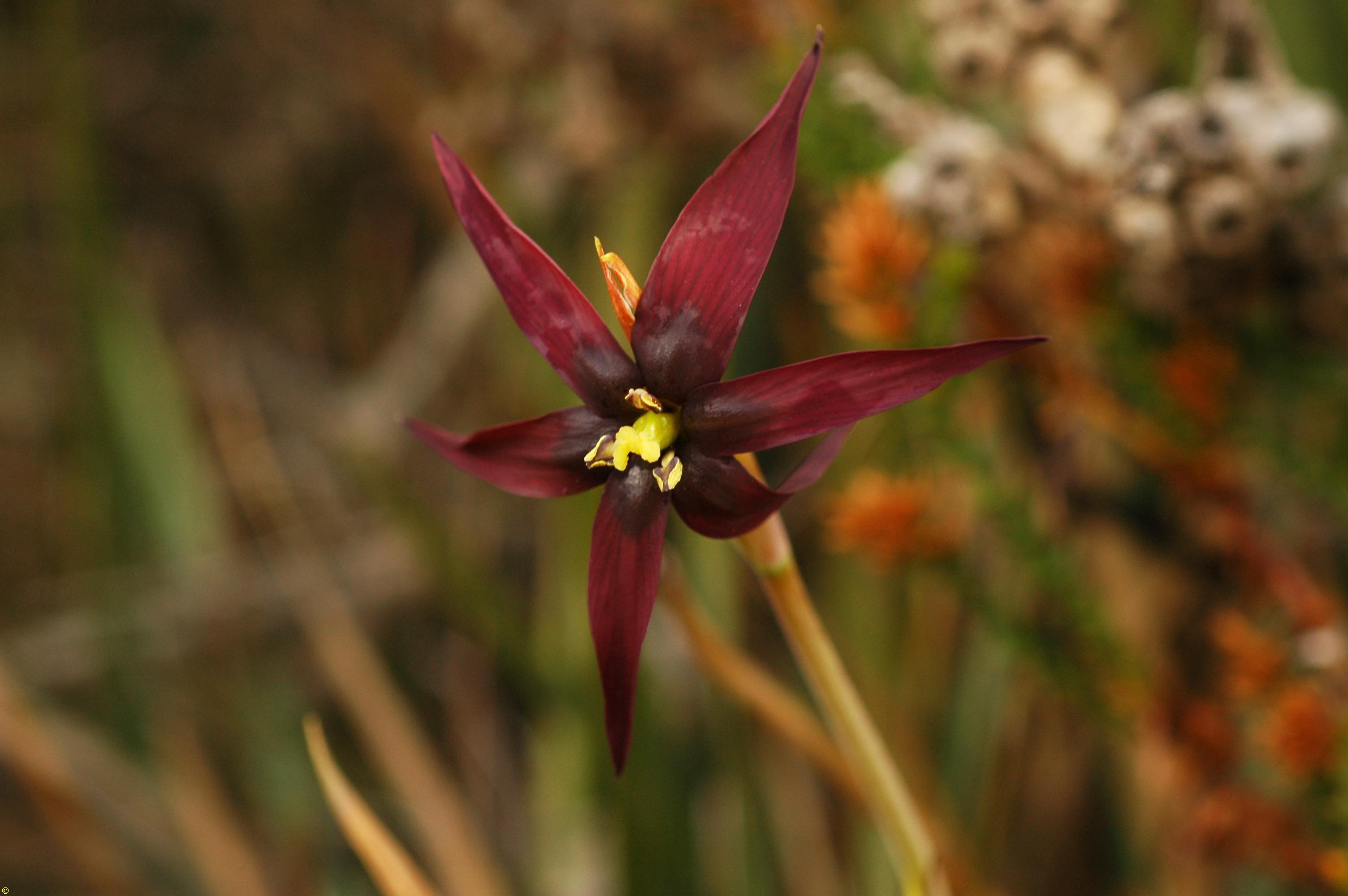Scientific Name: Isophysis tasmanica Endemic Having a natural distribution confined to a particular geographic region
Common Name: tasmanian purplestar
Family Classification (Clade): Monocots
Family: Iridaceae
Form Description: Tufted perennial herb; flat, erect leaves form fans at base of flowering stems; woody rhizomes.
Height (m): 0.1 – 0.4
Flowers: Large (6 cm diameter) single terminal flowers are dark purple, occasionally yellow.
Fruit: Capsule – numerous light brown seeds, 2 mm long.
Municipality
BurnieCentral HighlandsDerwent ValleyHuon ValleyKentishMeander ValleyWest Coast
Plant Communities
Alpine and Sub-alpine VegetationHeathSedgeland and Wetland
Habitat Notes
Alpine sedgeland and heath in western mountains.
Site Tolerance
Exposed, Moist, Rocky
Soil Tolerance
Nutrient-poor, Poorly-drained, Well-drained
Frost Tolerance
Hardy
Propagation Calendar
-
Flowering Month
Jan Feb Mar Apr May Jun Jul Aug Sep Oct Nov Dec -
Seed Collecting Month
Jan Feb Mar Apr May Jun Jul Aug Sep Oct Nov Dec -
Sowing Month
Jan Feb Mar Apr May Jun Jul Aug Sep Oct Nov Dec -
Cutting Month
Jan Feb Mar Apr May Jun Jul Aug Sep Oct Nov Dec
Propagation Method
Seed
Seed Information
Seed Treatment Method
Cold Some species require exposure to cold before they germinate. These species are best sown in early winter and left to germinate in a shade house.
Seed Treatment Notes
Not easily grown. Stratify seeds at 3-5°C for 4-6 weeks.
